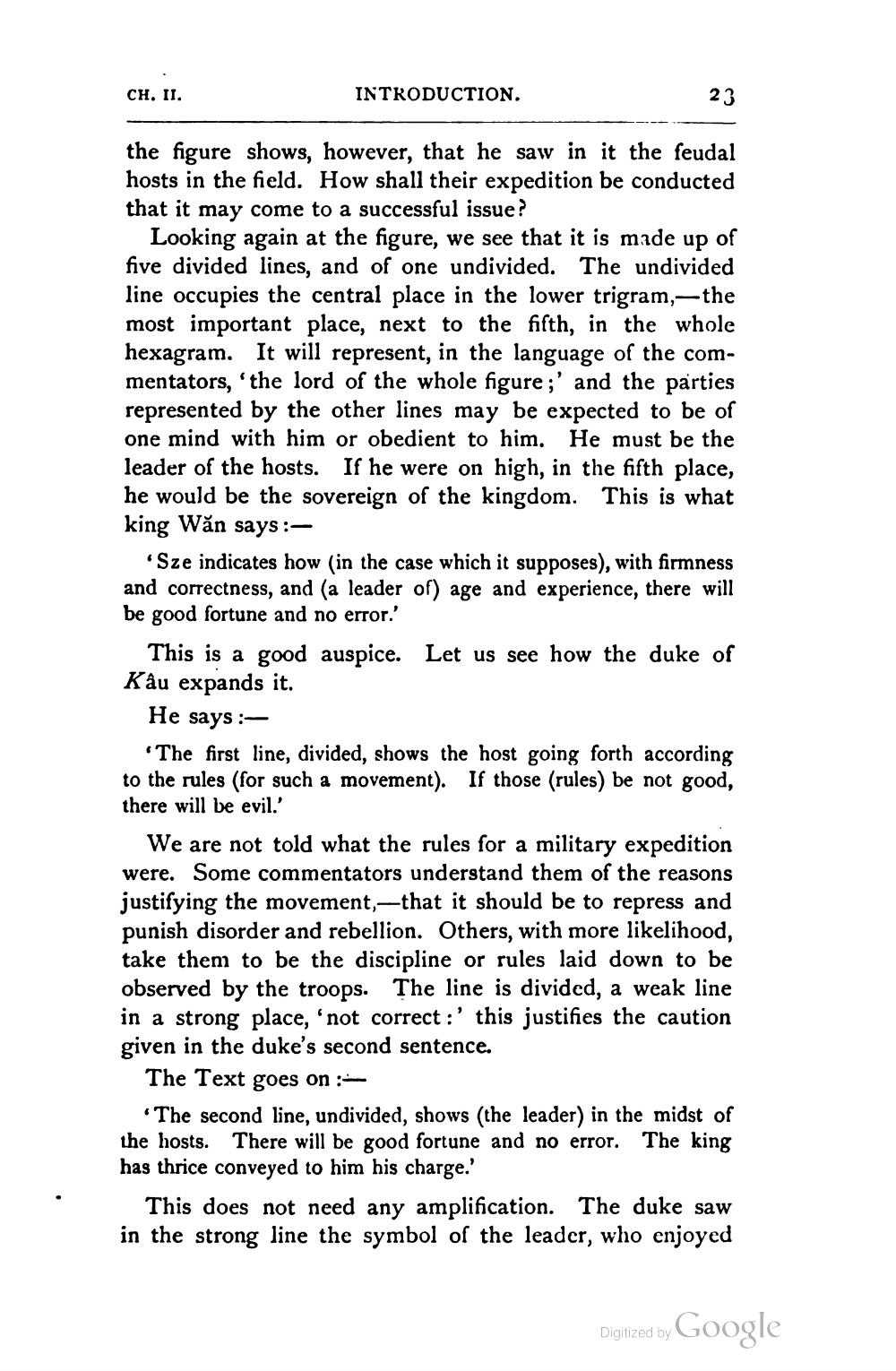________________
CH. II.
INTRODUCTION.
23
the figure shows, however, that he saw in it the feudal hosts in the field. How shall their expedition be conducted that it may come to a successful issue?
Looking again at the figure, we see that it is made up of five divided lines, and of one undivided. The undivided line occupies the central place in the lower trigram,—the most important place, next to the fifth, in the whole hexagram. It will represent, in the language of the commentators, 'the lord of the whole figure;' and the parties represented by the other lines may be expected to be of one mind with him or obedient to him. He must be the leader of the hosts. If he were on high, in the fifth place, he would be the sovereign of the kingdom. This is what king Wăn says:
Sze indicates how (in the case which it supposes), with firmness and correctness, and (a leader of) age and experience, there will be good fortune and no error.'
This is a good auspice. Let us see how the duke of Kâu expands it.
He says :'The first line, divided, shows the host going forth according to the rules (for such a movement). If those (rules) be not good, there will be evil.'
We are not told what the rules for a military expedition were. Some commentators understand them of the reasons justifying the movement,—that it should be to repress and punish disorder and rebellion. Others, with more likelihood, take them to be the discipline or rules laid down to be observed by the troops. The line is divided, a weak line in a strong place, 'not correct :' this justifies the caution given in the duke's second sentence.
The Text goes on :•The second line, undivided, shows the leader) in the midst of the hosts. There will be good fortune and no error. The king has thrice conveyed to him his charge.'
This does not need any amplification. The duke saw in the strong line the symbol of the leader, who enjoyed
Digitized by Google




